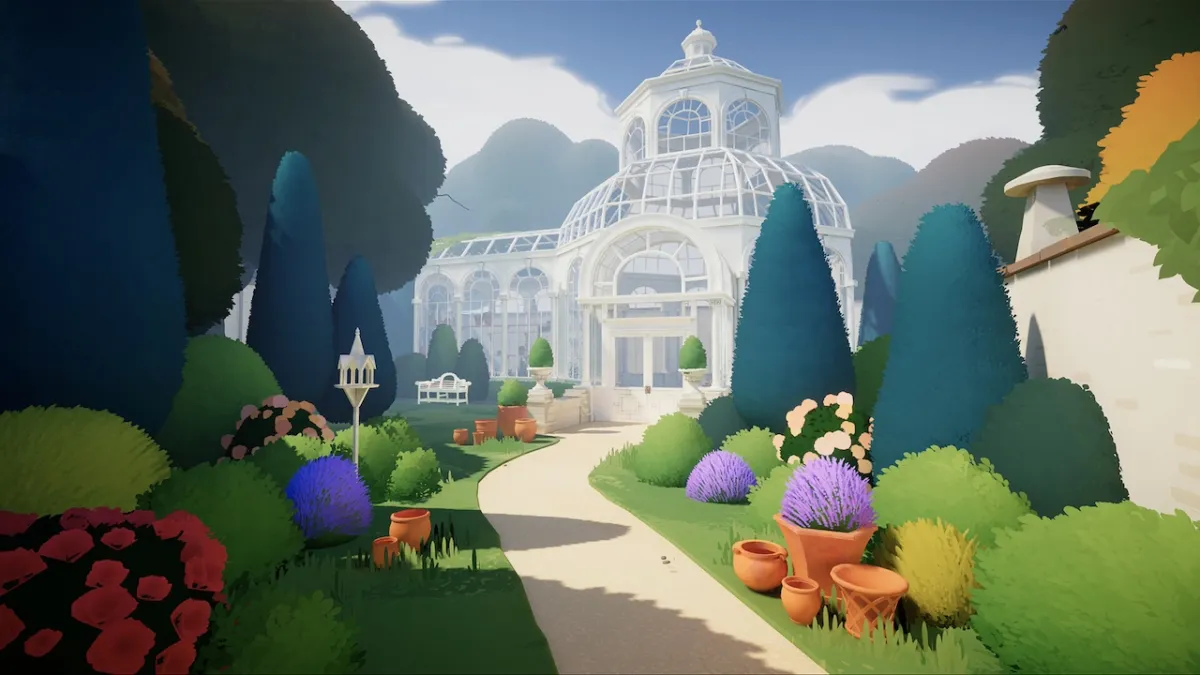The review now leaving platform five is the Train Simulator 2012 (TS2012) to conclusionville. I realise it’s not a route well-travelled for most players, so thanks for joining me on this journey. I’m guessing that if you clicked on this review you’re either genuinely interested in the title or keen to embark on a safari-like expedition into the niche realms of the industry.
The chap in the screenshot above is Dale. Dale pops up in the very first tutorial mission, tells you he won’t teach you how to drive a train and instructs you to play other tutorial missions instead. I like Dale. He’s sassy.
Here’s the train he doesn’t help you to drive.
Dale’s unhelpful attitude actually makes a certain kind of sense when you realise that TS2012 is essentially a free upgrade from Railworks 2, the developers’ previous train-based title. Most of the people making the switch should indeed know how to drive a train by now. Hell, most of them probably know how to drive a train in real life. TS2012’s updated features appear to include a few new tracks and trains, weather effects, greater track elevations and an improved graphics engine …
… That I wasn’t able to use, because, much like some of the trains in this game, my PC is so old that it’s powered by steam and coal. Tim and I seem to share this in common (maybe we should set up a relief fund). As such, all of my screenshots show the game on mid-to-low settings through the ‘legacy’ graphics option (handily included for people like me who haven’t upgraded since the invention of electricity).
Anyway, train driving. Both ‘simple’ and ‘expert’ control options are offered, though if you want to play any of the ‘career mode’ scenarios you’ll have to master the expert version. Simple just gives you an accelerator and a forward/reverse switch, while expert introduces the fascinating world of breaks and regulators (which, depending on the type of train, controls steam/amp generation). Honestly, you may as well learn the expert approach because it gives you more to do in the actual levels. It’s possible to tweak the control scheme even further and put yourself in full command of a steam train’s boiler system, resulting in TS2012 being the only game in the world to include the phrase ‘automatic fireman’ in its options menu.
The non-Dale tutorials talk you through both control schemes, the slight differences with driving a steam train and how to euphemistically couple your train with freight. It’s all pretty well explained and afterwards you can bask in the satisfaction of having a lovely green tick next to each lesson.
Yes! I’m the king of trains!
But where to drive them? TS2012 provides ten different routes to play around on (one of which is a test track, and only one of which – the Pennsylvania Horseshoe Curve – is new to this update). A few, like the Alpine ski run, are fictional, while others, such as the aforementioned Curve, are real.
You can drive along tracks in ‘standard’ and ‘career’ mode, with the latter providing a sort of pseudo-campaign of six missions on the new Horseshoe Curve and giving you a points score for your operational competence based on things like timeliness and sticking to the speed limit. Standard mode has no scores, but offers a wider range of scenarios to play.
A decent amount of effort has gone into the missions to try to keep them varied and interesting, so they feature things like a fire at the control tower (can you move the precious freight away in time?) or goats on the line (can you, err, not run over the goats in time?) However, as each one is linear and scripted there aren’t any surprises once you’ve played through a mission. Certain signals will always be red, and events will play out exactly as before.
The third and final mode is ‘free roam’, which lets you do fun things like this.
Sadly, just as in standard and career modes, events like a derailing (or speeding through a red light) spell an automatic game over.
Hold up a second though, one of the tracks you can drive along is York to Newcastle. Does that mean …?
Sweet virtual Jesus, somebody put my birthplace in a game.
It’s quite strange driving a train down the line between Northallerton and York, a route I travelled many, many times when I still lived in Britain; but experiencing the verisimilitude of a track that I actually know well also gave me a brief jolt of this games appeal. I kept an eye out for landmarks and, sure enough, was rewarded with the sewage works that you pass just outside York.
Delightful.
I even switched the viewpoint to the ‘free’ camera (just one of about twelve camera angles you can admire the trains from) and floated it off over virtual Northallerton in search of the house I grew up in. Unfortunately, the town beyond the station isn’t modelled that accurately, but I still got a bizarre, short-lived thrill imagining that it might be there.
Aside from the enjoyment of being able to drive one of your favourite trains, this must be where some of the appeal of TS2012 stems from. It’s kind of like the buzz you get taking control of your team in FIFA; leading a familiar collection of names in a familiar stadium to a glory they will never achieve in real life. Except here the glory is just running the train on time.
The Railworks community seems to be fairly active in using the in-game editor to create new scenarios and TS2012 has added a ‘timetable mode’ to enable quicker, easier construction of these missions. This will no doubt please some, and the rest of the creative types will surely continue to crank out free add-ons to go alongside the official (and, frankly, rather pricey) DLC that you’ve probably all seen on Steam.
I, on the other hand, found the editor to be rather baffling. It reminded me of many lengthy attempts to understand ‘Dromed’ (the editor for Thief: The Dark Project) and my near endless quest to design anything better than a small room with a chair in it. In the TS2012 editor I was able to ascertain that it’s a relatively in-depth and powerful piece of kit, before using it to make an army of cattle attack a low-res Durham Cathedral.
To be blunt, TS2012 is a hard game to score. It’s a fearsomely niche title (and I play Paradox strategy games for heaven’s sake) with a fanbase who’ll be judging it by a completely different set of criteria. To them, the interest may be in how accurately the Horseshoe Curve is represented or the potential for inclusion of their favourite engine. My job is to critique it as a game.
So, does TS2012 simulate the driving of various trains? Yes, I would say that it does. Is that particularly interesting? Only if you’re in a select group of people. It’s a game that is necessarily restricted by its own remit.
There’s interaction, minor skill and (to an extent) drama involved, so it certainly qualifies as a videogame; it’s just that the majority won’t find the setting or activities particularly enthralling. I will happily admit to being more engaged that I’d expected, and at times I did get sucked in to the task of reaching platforms and other destinations on time, but this isn’t a game I’ve got any plans to continue playing beyond this review. My journey with TS2012 terminates here.



